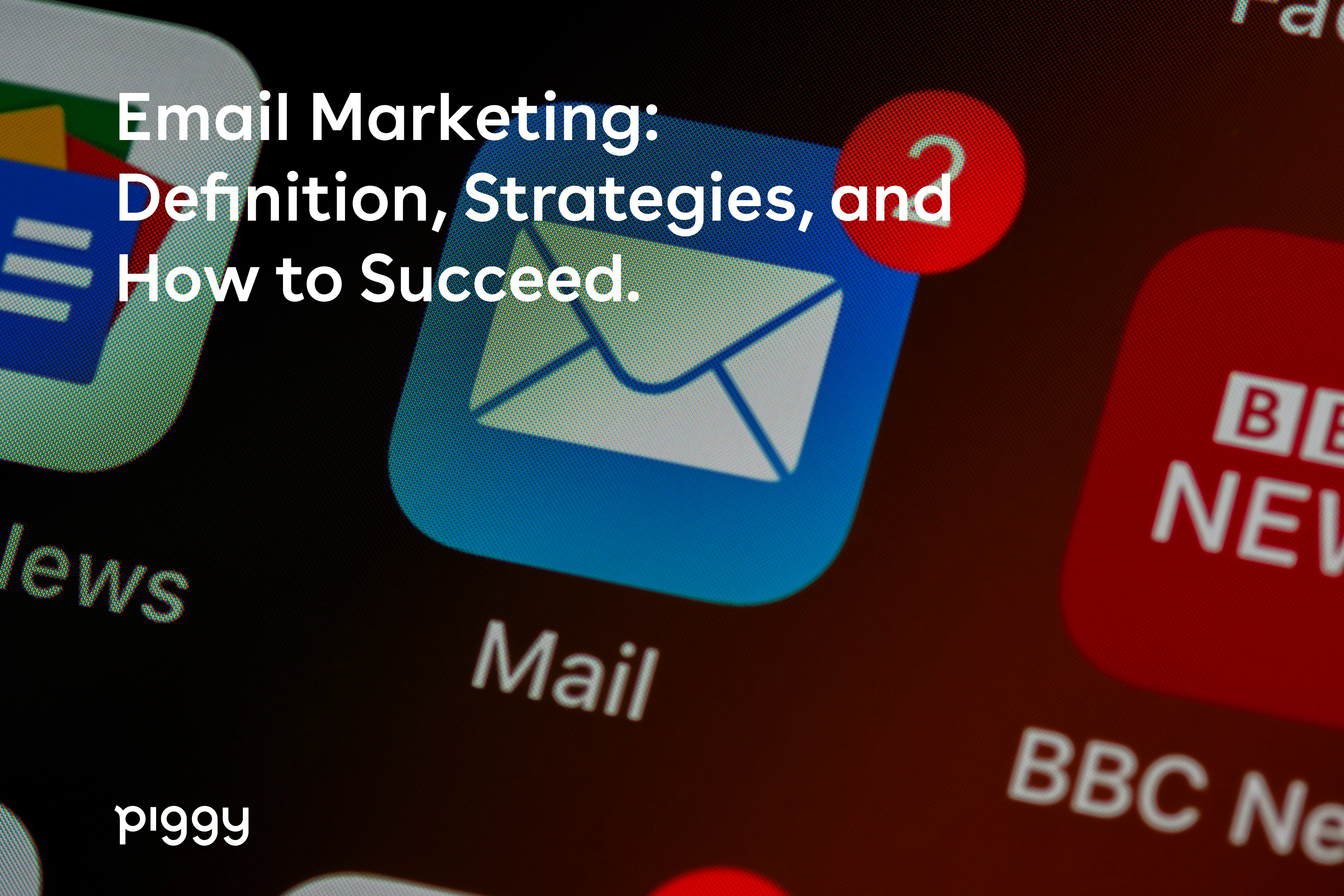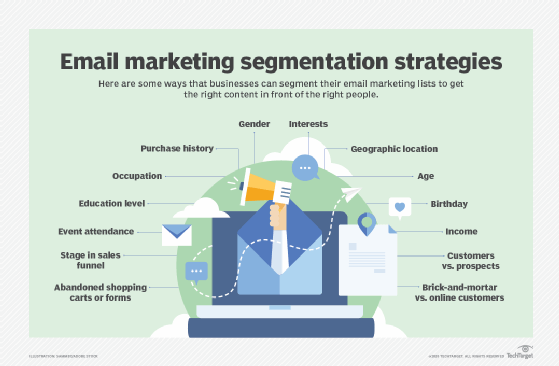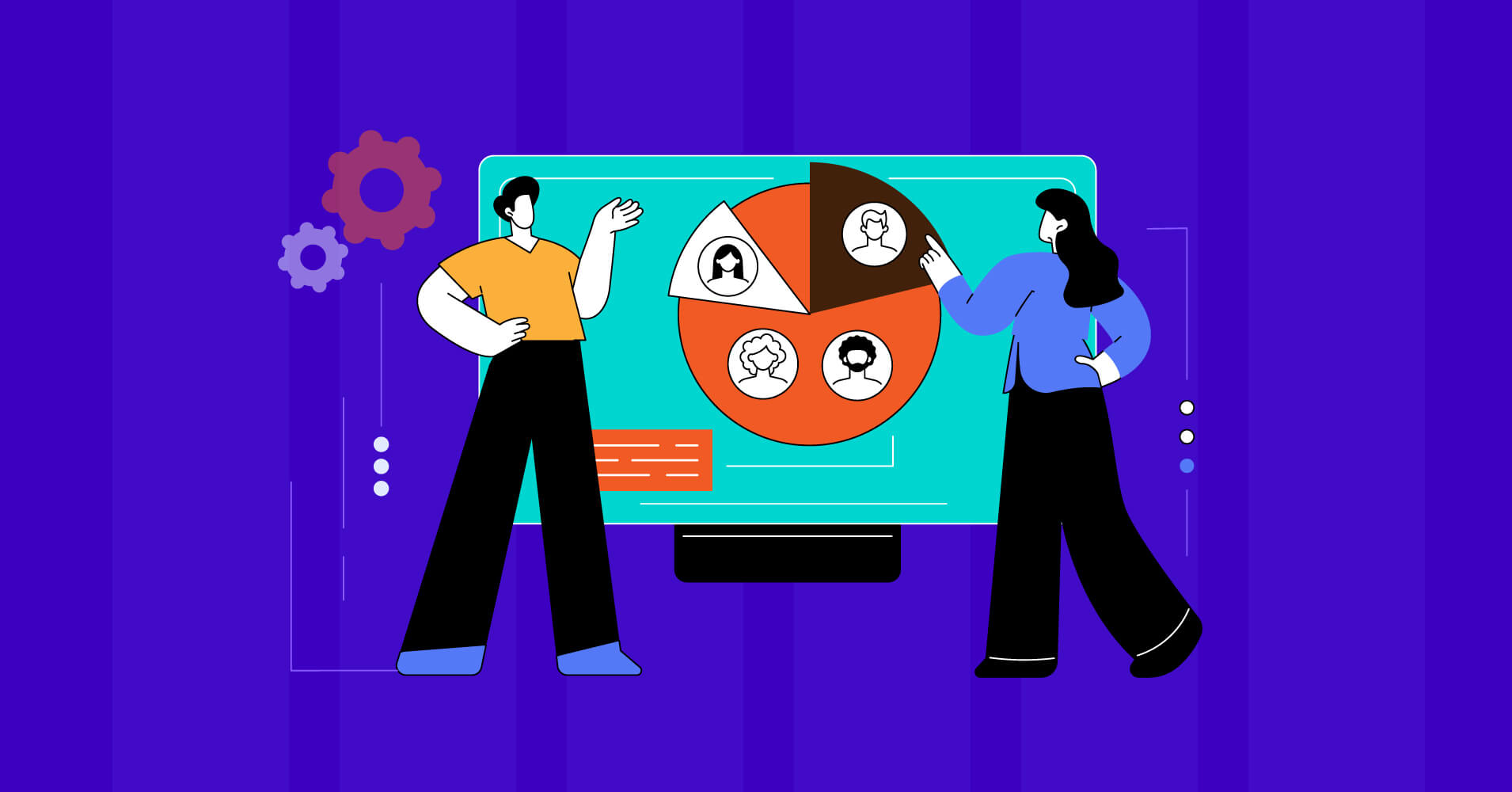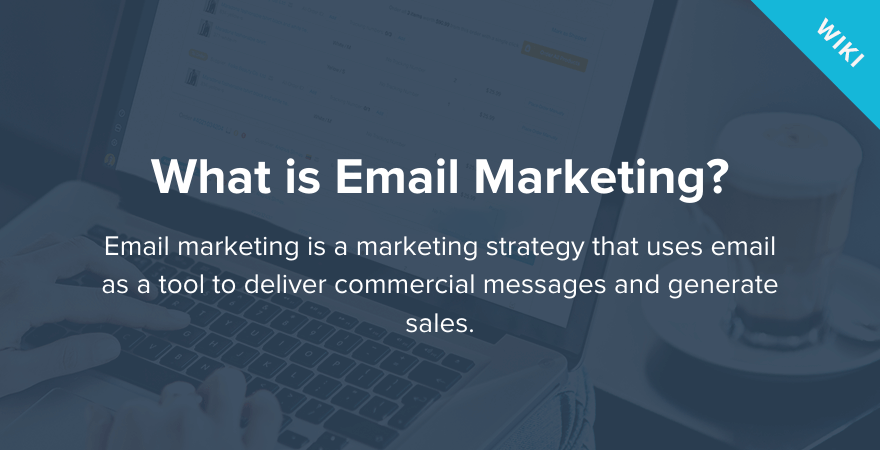Email marketing strategy refers to the plan businesses use to send emails to their audience. It aims to build relationships and achieve marketing goals.
Understanding email marketing strategy is key for any business. It involves planning, segmenting, and sending emails to the right people at the right time. This strategy helps businesses connect with customers, boost engagement, and drive sales. With a clear strategy, businesses can improve their communication and track their success.
Whether you are new to email marketing or looking to enhance your existing efforts, knowing the basics of an email marketing strategy will set you on the path to success. This blog will explore what makes a strong email marketing strategy and how to create one that works for your business.

Credit: www.piggy.eu
Introduction To Email Marketing
Email marketing is a powerful tool for businesses. It helps connect with customers directly. This strategy involves sending emails to a list of subscribers.
Emails can include promotions, updates, or valuable content. It’s an effective way to build relationships and drive sales. Let’s dive deeper into what email marketing is and its importance.
What Is Email Marketing?
Email marketing is the act of sending commercial messages via email. These messages target a group of people. It can be used for various purposes:
- Promoting products or services
- Sharing company news
- Providing valuable content
It’s a direct and personal way to reach customers. Businesses can tailor messages to suit individual needs. This makes email marketing a versatile and essential tool.
Importance Of Email Marketing
Email marketing is crucial for several reasons. First, it allows direct communication with customers. This builds trust and loyalty. Here are some key benefits:
| Benefit | Description |
|---|---|
| Cost-effective | Sending emails is cheaper than other forms of marketing. |
| Targeted | Emails can be customized to address individual preferences. |
| Measurable | Track open rates, click rates, and conversions easily. |
| High ROI | Email marketing delivers a high return on investment. |
Emails can remind customers about your brand. They help keep your business top of mind. Regular updates encourage repeat business and referrals.
In summary, email marketing is a vital component of any marketing strategy. It helps businesses grow and maintain strong customer relationships.
Key Elements Of An Email Marketing Strategy
An effective email marketing strategy requires careful planning and execution. Knowing the key elements can help you create a successful campaign. Let’s dive into the crucial aspects you need to consider.
Target Audience
Understanding your target audience is fundamental. You need to know who you are sending emails to. This includes their preferences, needs, and behaviors. Segment your audience based on demographics, interests, and past interactions. This ensures your messages are relevant and personalized.
Use tools like analytics and surveys to gather data. Create detailed buyer personas to represent different segments of your audience. Tailor your content to meet the specific needs of each persona.
Goals And Objectives
Set clear goals and objectives for your email marketing strategy. This helps you measure success and stay focused. Common goals include increasing open rates, click-through rates, and conversions.
Use the SMART criteria to define your goals. They should be:
- Specific: Clearly define what you want to achieve.
- Measurable: Ensure you can track progress.
- Achievable: Set realistic goals.
- Relevant: Align with your overall business objectives.
- Time-bound: Set a deadline for achieving your goals.
For example, a specific goal might be to increase your email open rate by 10% in the next three months. Track your progress using analytics tools.
Building Your Email List
Building an email list is essential for a successful email marketing strategy. A strong list allows you to reach your audience directly and engage with them. Let’s explore the steps to build your email list effectively.
Opt-in Forms
Opt-in forms are crucial for collecting email addresses. Place them on key areas of your website. For example, the homepage, blog posts, and landing pages. Ensure the form is easy to fill out. Ask for minimal information, like name and email.
Design the form to be visually appealing. Use contrasting colors for the submit button. Add a clear call-to-action (CTA). For instance, “Subscribe Now” or “Join Our Newsletter.” Ensure the form is mobile-friendly. A significant number of users access the internet via mobile devices.
Lead Magnets
Lead magnets are incentives offered to users. They encourage users to share their email addresses. Examples of lead magnets include:
- eBooks
- Whitepapers
- Discount codes
- Exclusive access to content
Ensure the lead magnet is valuable and relevant to your audience. The content should solve a problem or provide significant value. Promote the lead magnet on your website and social media channels.
Combine lead magnets with opt-in forms. This increases the chances of users subscribing. For instance, offer a free eBook in exchange for an email address. Ensure the offer is clear and compelling.

Credit: www.techtarget.com
Creating Engaging Content
Creating engaging content is key to a successful email marketing strategy. It involves producing messages that capture your audience’s attention and encourage them to take action. This section will explore two crucial aspects of creating engaging content: personalization techniques and compelling subject lines.
Personalization Techniques
Personalization goes beyond just using the recipient’s name. It tailors the email’s content to each subscriber’s preferences and behaviors.
- Segmentation: Divide your email list into smaller groups based on criteria like demographics, interests, or past purchases.
- Dynamic Content: Use dynamic content blocks to show different content to different segments within the same email.
- Behavioral Triggers: Send emails based on user actions, like abandoned carts or browsing history.
Implementing these techniques makes your emails more relevant to the recipient. This can lead to higher engagement and conversion rates.
Compelling Subject Lines
The subject line is the first thing your audience sees. A compelling subject line can make the difference between an opened email and one sent to the trash.
- Keep it Short: Aim for 50 characters or fewer to ensure it displays well on all devices.
- Use Action Words: Words like “discover,” “learn,” or “get” can encourage action.
- Create Urgency: Phrases like “limited time offer” or “last chance” can prompt immediate action.
- Ask Questions: Questions engage the reader’s curiosity and can increase open rates.
Testing different subject lines can help determine what works best for your audience. Always keep your audience’s preferences in mind to craft the most effective subject lines.
Designing Effective Emails
Crafting effective emails is crucial in any email marketing strategy. A well-designed email captures the reader’s attention and encourages action. The design of your email plays a significant role in whether your message gets read or ignored. Let’s explore some key elements to consider when designing effective emails.
Responsive Design
Responsive design ensures your emails look great on any device. Whether your audience views your email on a desktop, tablet, or smartphone, the content should adjust accordingly. This adaptability improves user experience and increases engagement.
To implement responsive design:
- Use flexible layouts and images.
- Ensure text is readable without zooming.
- Test emails on multiple devices before sending.
Visual Elements
Visual elements play a pivotal role in making your emails engaging. Well-placed images, icons, and colors can make your message more appealing. However, balance is key. Too many visuals can overwhelm the reader.
Consider these tips for using visual elements:
| Element | Tip |
|---|---|
| Images | Use high-quality images relevant to your content. |
| Colors | Stick to a consistent color scheme that matches your brand. |
| Icons | Use icons to highlight key points or actions. |
Remember, the goal is to enhance, not distract. Your visuals should support your message.
Automation And Segmentation
Email marketing strategy is crucial for businesses. It helps engage with customers and drive sales. Two important components of this strategy are automation and segmentation. These elements make your email campaigns more effective and personalized. Let’s dive into the details of automated email campaigns and segmentation strategies.
Automated Email Campaigns
Automated email campaigns save time and effort. They send emails based on specific triggers or schedules. For example, welcome emails to new subscribers or birthday wishes to customers. Automation ensures timely communication without manual effort. Here are some benefits of automated email campaigns:
- Consistency: Emails are sent at the right time, every time.
- Personalization: Tailor messages to customer actions or behaviors.
- Efficiency: Focus on other tasks while automation handles emails.
To set up automated campaigns, use tools like Mailchimp or HubSpot. These platforms offer templates and workflows. You can create sequences for various scenarios. Always monitor and adjust your campaigns for better results.
Segmentation Strategies
Segmentation involves dividing your email list into smaller groups. Each group shares common characteristics. This allows for more targeted and relevant content. Here are some popular segmentation strategies:
| Segmentation Type | Description |
|---|---|
| Demographic | Based on age, gender, income, etc. |
| Geographic | Based on location, region, or country. |
| Behavioral | Based on purchase history, website activity, etc. |
| Psychographic | Based on interests, values, or lifestyle. |
Segmentation improves engagement by sending relevant content. This leads to higher open and click-through rates. Implementing segmentation is easy with email marketing tools. They allow you to create segments and send tailored emails. Start by analyzing your audience data and creating segments that align with your goals.
Measuring Success
Understanding how well your email marketing strategy works is key. Measuring success helps you see what works and what doesn’t. By tracking the right metrics, you can make informed decisions. This will help you improve your email campaigns. Here are some important ways to measure success.
Key Metrics
Tracking key metrics is essential. These metrics show how your emails perform. Here are some important ones:
- Open Rate: The percentage of recipients who open your email.
- Click-Through Rate (CTR): The percentage of recipients who click on links in your email.
- Conversion Rate: The percentage of recipients who complete a desired action.
- Bounce Rate: The percentage of emails that could not be delivered.
- Unsubscribe Rate: The percentage of recipients who unsubscribe from your list.
Understanding these metrics helps you know what to improve. High open rates mean your subject lines are effective. Low click-through rates may suggest your content needs work.
A/B Testing
A/B testing is a powerful tool. It helps you find out what works best in your emails. Here’s how you can use it:
- Create two versions of an email. Change one element, like the subject line.
- Send each version to a small group from your email list.
- Measure which version performs better using key metrics.
- Send the winning version to the rest of your list.
A/B testing can be done for various elements:
- Subject lines
- Email content
- Call-to-action buttons
- Images
Regular A/B testing helps you continually improve your emails. Small changes can have big impacts. Always test one element at a time for clear results.
By measuring success and using A/B testing, you can refine your email marketing strategy. This ensures better engagement and higher conversion rates.

Credit: fluentcrm.com
Best Practices And Tips
Email marketing is a powerful tool for reaching your audience. To make the most of it, follow these best practices and tips. They will help you avoid common pitfalls and ensure your emails reach their intended targets.
Avoiding Spam Filters
Spam filters can block your emails from reaching your audience. To avoid this, follow these tips:
- Use a recognizable sender name: People are more likely to open emails from names they know.
- Write clear subject lines: Avoid using all caps, excessive punctuation, or words like “free” or “urgent”.
- Include a physical address: This adds legitimacy to your email.
- Provide an easy opt-out option: Make it simple for users to unsubscribe if they choose to.
- Test your emails: Send test emails to yourself to see if they land in the spam folder.
Ensuring Deliverability
Ensuring your emails reach your audience is crucial. Here are some tips to help:
- Maintain a clean email list: Remove inactive or bounced email addresses regularly.
- Use a reputable email service provider: This can help improve your deliverability rates.
- Authenticate your domain: Set up SPF, DKIM, and DMARC records to verify your emails.
- Monitor your email metrics: Keep an eye on open rates, click rates, and bounce rates.
- Send emails consistently: Stick to a regular schedule to build trust with your audience.
Lessons Learned
Each successful campaign offers valuable lessons. Here are some key takeaways:
- Personalization: Tailor emails to individual preferences to increase engagement.
- Timing: Send emails at optimal times for your audience.
- Content Quality: Provide valuable content that meets the needs of your subscribers.
- Clear CTA: Use strong calls to action to guide recipients.
- Testing: Regularly test different elements to find what works best.
You can refine your email marketing strategy by focusing on personalization, timing, quality content, clear CTAs, and continuous testing. These elements will help you achieve better results in your email marketing efforts.
Frequently Asked Questions
What Is Email Marketing Strategy?
An email marketing strategy is a plan to reach customers via email. It involves designing, sending, and analyzing targeted emails.
Why Is Email Marketing Strategy Important?
An email marketing strategy helps businesses engage customers effectively. It boosts brand awareness, drives sales, and enhances customer loyalty.
How To Create An Email Marketing Strategy?
To create an email marketing strategy, define goals, segment your audience, design campaigns, and analyze results.
What Are The Benefits Of Email Marketing Strategy?
Email marketing strategy offers benefits like increased engagement, higher conversion rates, and cost-effectiveness. It also fosters customer relationships.
Conclusion
Crafting an effective email marketing strategy is essential. It helps build strong customer relationships. Always focus on providing value. Keep your messages clear and concise. Personalize your emails to engage your audience. Track your results regularly. Adjust your strategy based on feedback and data.
Consistency and relevance are key. Remember, a good strategy leads to better engagement. Happy emailing!

